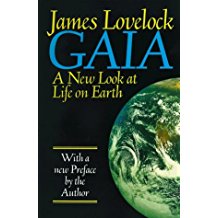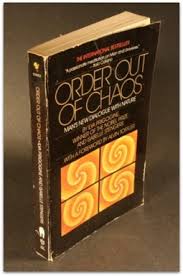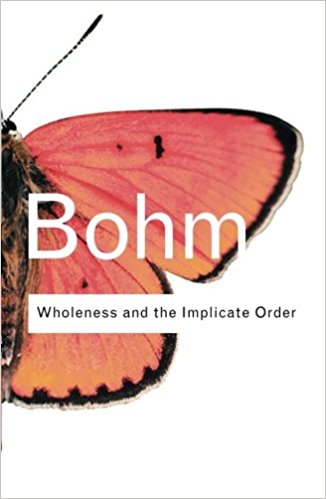In Search of Security Part Nine
In Search of Security Part Ten
The Politics of Information
This series, from 1983, gave me a chance to ponder issues, concerning the power and responsibility of journalistic media, that had preoccupied me every since I had begun working for CBC Radio twelve years before. Two "hooks" provided the occasion. The first was the calling of a Royal Commission to consider the problem of growing monopoly in the newspaper business. This was the Kent Commission, after commissioner Tom Kent, which reported in 1981. The second was the publication, in 1980, of the book which gave the series its title, Anthony Smith's The Geo-Politics of Information, a book on the clamour in what was then generally called the Third World for a New World Information Order, so-called, one not totally dominated by Western media. Both of these question are addressed - the history (and myth) of the free press in Part One, the New World Information Order debate in Part Two - but the series also allowed me to go further. Part Three looks at foreign news and draws heavily on the work of Noam Chomsky and Edward Said. Chomsky had recently published, with Edward Herman, a two volume work called The Political Economy of Human Rights, which had had a huge influence in shaping my view of media. In these books Chomsky and Herman show how a nominally free press faithfully reproduces what they call "imperial ideology." Said, for his part, had just brought out Covering Islam, a book in which he brought the thesis of his celebrated Orientalism into the present with a consideration of contemporary news coverage of Islamic countries. The final show of the set focused on the news industry's "mode of production" and the ways in which it shapes its finished product.
One notable thing about this series was the number of prominent scholars in the field who agreed to take part. I have mentioned Chomsky and Said, but there was also Stuart Hall, James Curran, Gaye Tuchman, Lewis Lapham, Todd Gitlin and many others. Another was the strength of the interviews I recorded for the series, which led me into my first questioning of the documentary format in which I was then working. Documentaries have narrative requirements which tend to dictate how the component interviews will be edited. Mad Magazine used to joke, in a satire on the New York Times famous slogan, "all the news thats fit to print," that it presented "all the news that fits the print"; and documentaries are the same. The "clips" that will be cut out of the interviews will be those that fit the narrative requirements of the documentary. This generally precludes any sustained attention to the individual character or context of the thinkers who are quoted. Reflection on this issue led to the approach that I generally took in my work for Ideas after 1990 in which my subjects, wherever possible, were presented one-at-a-time and in depth.
The participants in the series were as follows:
Part One: Paul Rutherford, James Curran, Anthony Smith, Stuart Hall, Lewis Lapham, Carman Cumming, Todd Gitlin, Dallas Smythe
Part Two: Juan Somavia, Rohan Samarajiva, Herbert Schiller, Anthony Smith, Tom McPhail, Bill Harley, Barry Zwicker
Part Three: Edward Said, Stuart Hall, Noam Chomsky, James Aronson, Tom Kent
Part Four: Stuart Hall, Lewis Lapham, Gaye Tuchman, James Curran,Todd Gitlin, Carman Cumming, Paul Rutherford, Jeremy Wilson, Noam Chomsky
A transcript of the series is available on the Transcripts page of the site.
The Politics of Information Part Two
The Politics of Information Part Three
The Politics of Information Part Four
Leopold Kohr
Despite his his originality and his influence as a thinker, the work of Leopold Kohr remains too little known. His philosophy in a nutshell was contained in his crucial book The Breakdown of Nations, published in 1957, where he wrote: "...there seems to be only one cause behind all forms of social misery: bigness...Whenever something is wrong, something is too big." The idea that everything has its proper size had been developed in the biological sciences by D'arcy Thompson in his 1917 book On Growth and Form, and later by J.B.S. Haldane in his essay "On Being the Right Size," but Kohr was the first, so far as I know, to apply it to the human and social worlds, creating what Ivan lllich called a "social morphology." E. F. Schumacher was Kohr's student, and brought Kohr's idea to wide attention in Small Is Beautiful (1973). Illich, likewise, acknowledged Kohr as his teacher and inspiration in books like Tools for Conviviality and others.
I was lucky to meet Kohr in the summer of 1989 when he came to Toronto to lecture at a gathering of his fellow decentralists. He was already in his eightieth year and somewhat deaf, but still a lively and charming speaker and companion. Happily, he had a couple of hours free to sit down and talk with me in the Ideas studio. The following programme was broadcast shortly afterwards. A transcript can be found on the Transcripts page which I have recently added to the site...
Religion and the New Science
This series had its genesis at a meeting of the Royal Society of Canada - in 1985, as I recall, though it may have been the year before. The subject was the relations of religion and science, and several of the people featured in this series were present - among others physicist Iain Stewart, philosopher Albert Shalom, and British scientist James Lovelock, whose "Gaia hypothesis" was then still new and controversial. I had long been interested in the developments in physics and other sciences that were leading some to speak of a "new science," and in the implications of these developments for theology and philosophy, so I took the Royal Society meeting as a starting point for the following programmes. The series came back to mind recently when I read an essay David Bohm had contributed to a festschrift for Owen Barfield back in the 1970's. Bohm, an adventurous philosopher physicist, is one of the featured speakers in the second programme of the series, along with Ilya Prigogine, a Nobel laureate in chemistry for his work on irreversibility, complex systems, and what he called dissipative structures. Also featured are James Lovelock and Rupert Sheldrake, whose then recently published A New Science of Life had so scandalized fellow biologist Sir John Maddox, the editor of the journal Nature, that he had declared it a "candidate for burning." Reading Bohm's essay, it seemed to me it was time to share these still vital and interesting voices.
Discussion of religion and science has a long history, but the discussion entered a new phase in the years before these programmes were broadcast in 1985. Among the reasons were recent experimental confirmation of the reality of quantum entanglement, or what Einstein had called "spooky action at a distance"; and the appearance of the sciences of complexity and emergent order, sciences which were then completing the job begun by early 20th century physics in overturning the postulates of classical science. The world according to science was becoming more subtle and mysterious. Rupert Sheldrake suggested that it was time to replace the old metaphor of "laws of nature" with something more provisional like "the habits of nature." David Bohm suggested that mind and matter must have "the same basic order" - two aspects of a single underlying process. Ilya Prigogine dared to "dream...about a more unified culture" in which science no longer posited a universe in which human consciousness is an anomaly.
In what follows scientists, philosophers, and theologians discuss the implications of this "new science." More than thirty years have elapsed since these shows were first broadcast, and no doubt details would need to be changed if they were to revised today, but it seems to me that the outlines hold up pretty well. I should also note that the series was honoured by the Canadian Science Writers Association as the year's best radio programme. My work rarely attracted prizes, but this was an exception, and the $1,000 that went with it, I recall, was a welcome addition to a then somewhat strained household budget...
The people heard in the series, in order of appearance, are as follows:
Part One: James Lovelock, Morris Berman, Rupert Sheldrake, Stephen Toulmin, Albert Shalom, Philip Hefner, Trevor Levere, Ravi Ravindra, Ilya Prigogine, Jacob Needleman
Part Two: David Bohm, James Lovelock, Rupert Sheldrake, Ilya Prigogine, David Peat
Part Three: Stephen Toulmin, Robert Rosen, Iain Stewart, David Bohm, Philip Hefner, Thomas Berry, Jacob Needleman, Ravi Ravindra








